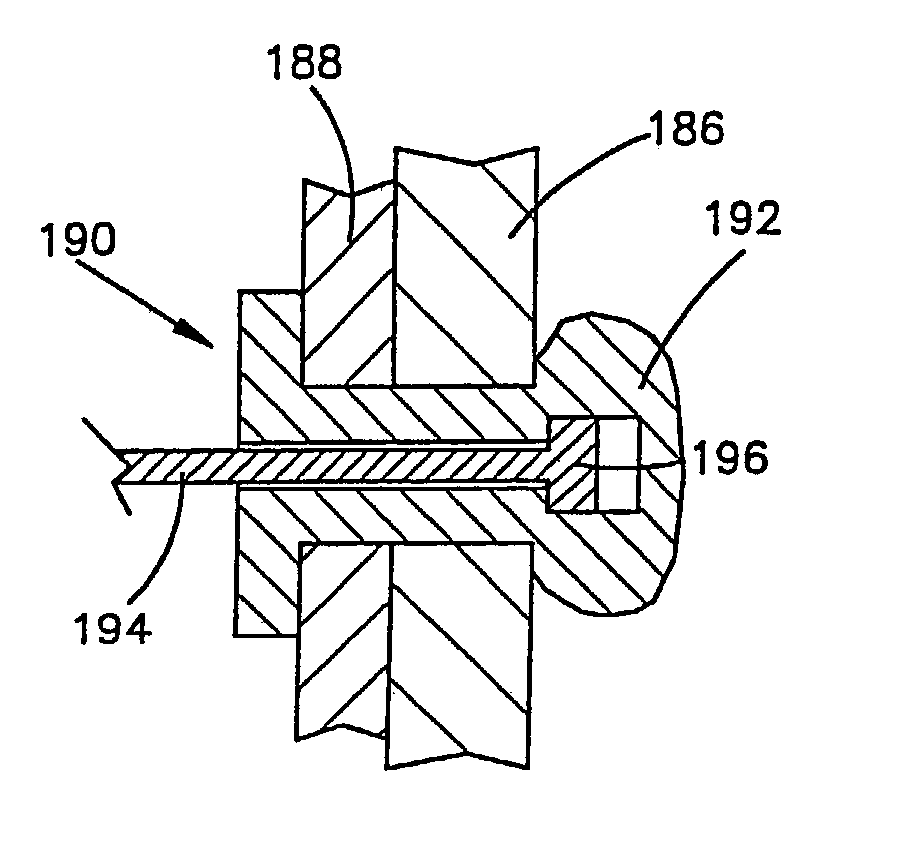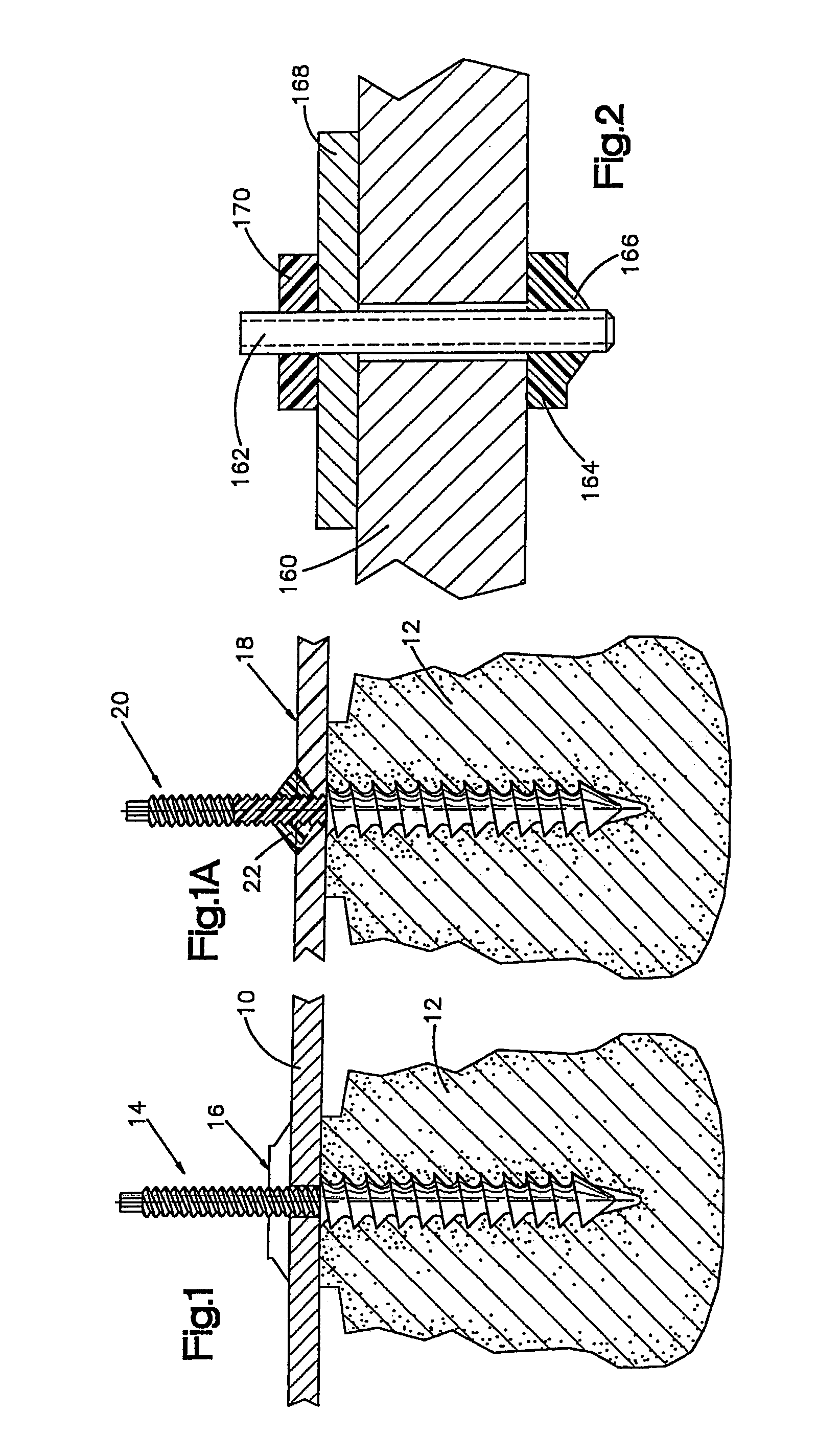Composite surgical devices
a surgical device and composite technology, applied in the field of surgical devices, can solve problems such as inability to biodegrad
- Summary
- Abstract
- Description
- Claims
- Application Information
AI Technical Summary
Benefits of technology
Problems solved by technology
Method used
Image
Examples
first embodiment
[0037]FIGS. 1 and 2 illustrate heat bonded assemblies including existing surgical objects such as plates, screws, etc. In FIG. 1, a bone plate 10 is secured to bone material 12 by a bone screw 14. The bone plate 10 and the bone screw 14 are both made of metal. Ordinarily, the bone screw 14 would be secured to the bone plate 10 by a metal nut threaded onto the bone screw 14 and run up adjacent the bone plate 10. However, such a connection can loosen and thus destroy the integrity of the assembly. Accordingly, in accordance with the present invention, a nut 16 is provided which is made of or includes a bondable material. The nut 16 is threaded on the bone screw 14 into abutting engagement with the bone plate 10. Then, the bondable material of the nut 16 is heated and softened to flow about the joint between the nut 16 and the bone plate 10, to bond the nut 16 to the bone plate 10. The nut 16 can also be bond to the bone screw 14 if desired for a stronger connection.
[0038]FIG. 1A illus...
second embodiment
[0051]It is difficult to tie a suture knot to itself or to slide it down through deep tissue in a limited working area (as in fiber optic surgery). Typically, the surgeon can often not work in a straight line but needs to use a suture loop (going through the tissue twice) to bring tissue together. Any such increase in the amount of tissue through which the suture must pass increases damage to tissue. Furthermore, mechanical tying or crimping of sutures or K-wires, especially of polymers or biodegradables which are generally smooth, does not produce connections which are as strong as desirable, and suture connections sometimes may come untied as a result.
[0052]In accordance with one of the features of the present invention, surgical connections for holding adjoining tissues together are secured by melting a fastener or anchor on the end of a suture, rather than by tying or by clipping the anchor on the end of the suture. (The term “suture” is used herein to refer to a suture, a K-wir...
PUM
| Property | Measurement | Unit |
|---|---|---|
| biocompatible | aaaaa | aaaaa |
| temperature | aaaaa | aaaaa |
| heat bondable | aaaaa | aaaaa |
Abstract
Description
Claims
Application Information
 Login to View More
Login to View More - R&D
- Intellectual Property
- Life Sciences
- Materials
- Tech Scout
- Unparalleled Data Quality
- Higher Quality Content
- 60% Fewer Hallucinations
Browse by: Latest US Patents, China's latest patents, Technical Efficacy Thesaurus, Application Domain, Technology Topic, Popular Technical Reports.
© 2025 PatSnap. All rights reserved.Legal|Privacy policy|Modern Slavery Act Transparency Statement|Sitemap|About US| Contact US: help@patsnap.com



